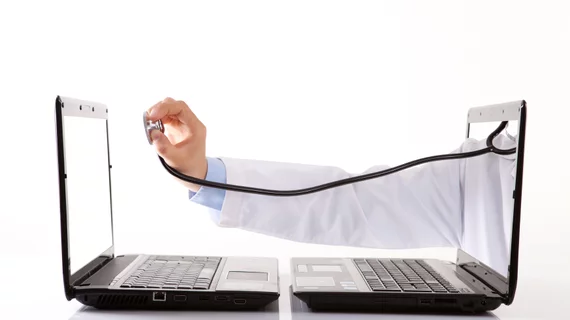How tele-ultrasonography diagnosed TB in Malawian HIV patients
A group of Malawian medical practitioners, including physicians and radiographers, utilized ultrasound and tele-ultrasonography to diagnose tuberculosis (TB) in patients with HIV with 92 percent accuracy.
Their findings and experiences were published online Sept. 26 in the Journal of the American College of Radiology.
“The diagnosis of tuberculosis TB in patients infected with HIV can be challenging in resource-limited settings,” wrote lead author Kara-Lee Pool, MD, of the University of California Los Angeles, and colleagues. “Extrapulmonary TB is particularly underdiagnosed, with data suggesting that half of patients with disseminated TB are not diagnosed until autopsy.”
Pool and colleagues noted ultrasound is a promising diagnostic modality because of its low cost, widespread availability and minimal risks to the patient. Additionally, tele-ultrasonography is particularly useful in resource-deficient areas like Malawi, as it allows for a geographically removed expert to receive and interpret ultrasound images.
Eleven Malawian medical practitioners were first enrolled in a four day focused assessment with sonography for HIV associated TB (FASH) course. None of the practitioners had previous experience with ultrasound to diagnose TB.
They performed scans on 183 patients, of which 75 scans were performed on HIV-positive patients without TB and 108 patients with TB. All of the images were sent to a ultrasound-based board-certified radiologist with expertise in ultrasonography, who evaluated the images on the technical variables of gain, depth, focus, labeling, and usable images.
The researchers noted there was an overall improvement in depth, focus, labeling and the number of usable images over time throughout the study.
Their protocol led to a proficiency in ultrasound interpretation, with the Malawian medical practitioners identifying 92 percent of abnormalities seen by the ultrasound radiologist.
Pool et al. noted their study suggests medical practitioners can learn technical skills related to ultrasound imaging after a short training course and tele-sonography can also help in ensuring quality and skill retention.
“This study thus has the potential not only to improve the diagnosis of extrapulmonary TB in the global health setting, but also to inspire the creation of future protocols using tele ultrasonography to harness radiology expertise for training in resource limited settings,” the researchers concluded.

